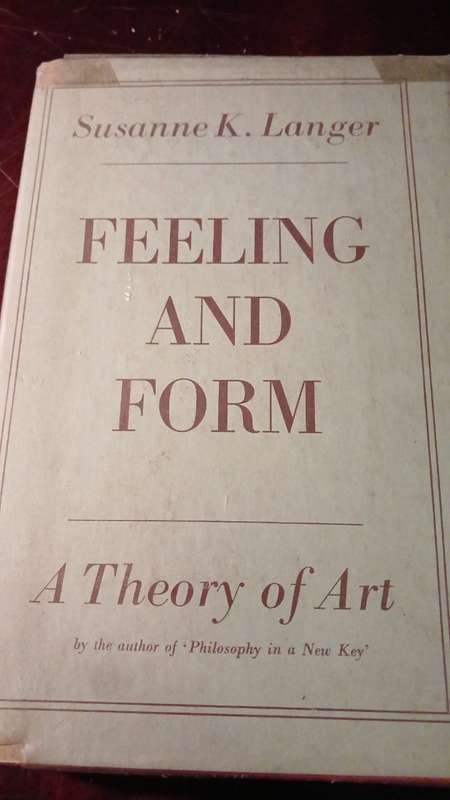
Feeling and Form, A Theory of Art
Check my rate
| Main centres: | 1-3 business days |
| Regional areas: | 3-4 business days |
| Remote areas: | 3-5 business days |

| Main centres: | 1-3 business days |
| Regional areas: | 3-4 business days |
| Remote areas: | 3-5 business days |
Feeling and Form, A Theory of Art
Routledge & Kegan Paul, 1967, hardcover, illustrated, index, 431 pages, condition: as new.
In Feeling and Form, A Theory of Art developed from Philosophy in a New Key, Susanne Langer developed a theory of symbolism, there applied to music, which she felt could be developed to embrace all the arts. In Feeling and Form she did just that. It offers the reader nothing less than a systematic, comprehensive theory of art, applied in turn to painting, sculpture, architecture, literature, music, the dance, drama and film.
Susanne Langer was an American philosopher, writer, and educator known for her theories on the influences of art on the mind. She was one of the earliest American women to achieve an academic career in philosophy and the first woman to be professionally recognized as an American philosopher. Langer is best remembered for her 1942 book Philosophy in a New Key, which was followed by a sequel, Feeling and Form: A Theory of Art, in 1953. In 1960, Langer was elected a Fellow of the American Academy of Arts and Sciences.
Langer established the use of symbols as the "epistemic unit of community", suggesting that all knowledge in a community is gained and built from shared symbol-systems within a given culture. Langer's concept regarding language and dialogue may be understood to imply that language does not simply communicate, but it produces symbols from which humans then create their own reality. Claimed support of this perspective comes from Langer's statement that "language is intrinsic to thinking, imagining, even our ways of perceiving".